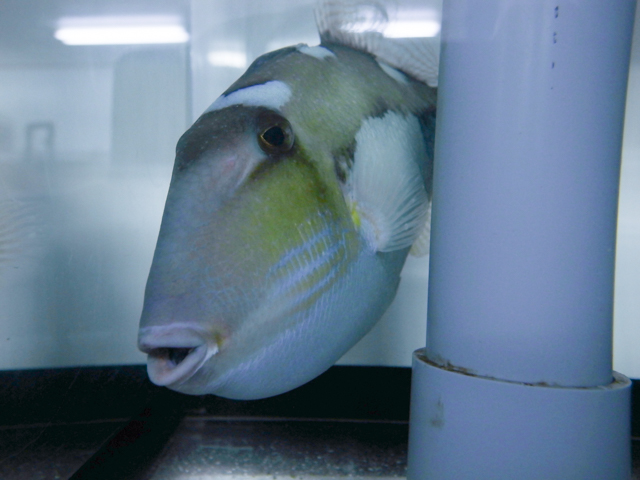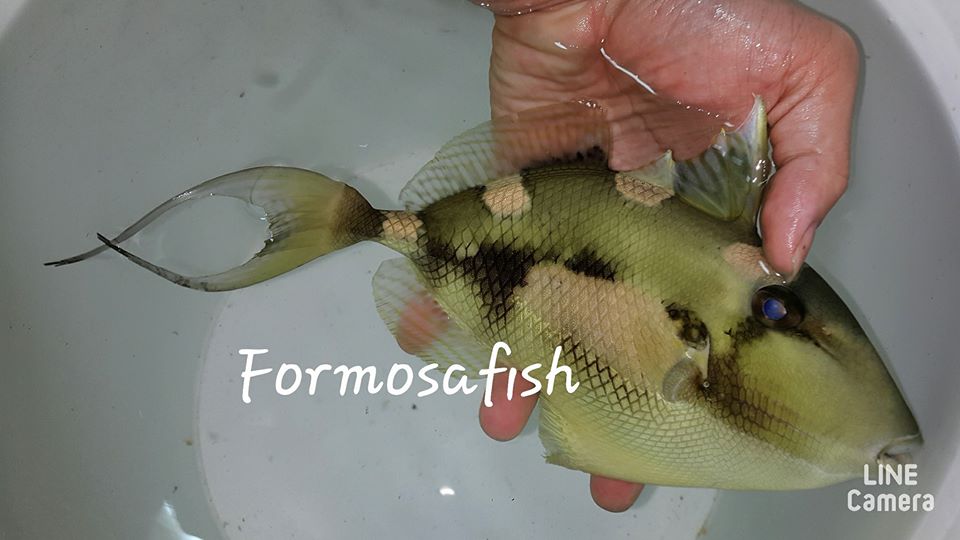One of the most seldom seen members of the triggerfish family was recently collected for the aquarium trade—Abalistes filamentosus. In fact, this fish is so hard to find in the wild, it was only scientifically described in 2004, making it the only balistid species other than the enigmatic Xanthichthys greenei to be discovered in this century! So why is this fish so rare?
Abalistes is an especially small genus, being comprised of just two species that are thought to be closely related to the stouter-bodied fishes classified in Rhinecanthus and Sufflamen, both of which are far more familiar to aquarists. The other member of the genus, the Starry Triggerfish (Abalistes stellatus) has actually been known since 1801. It occurs rather commonly in silty, shallow-water habitats across the Indo-Pacific, and its juveniles are a semi-regular find in the aquarium trade. On the other hand, A. filamentosus is known only from a handful of scattered locations—Taiwan, Okinawa, Kochi Prefecture, Timor, Northwest Australia, New Caledonia—and is generally collected only by commercial fishermen using either trawls or hook-and-line.
Known specimens have been found at a depth range of 20-180 meters, but it can likely be expected even deeper than this, as A. stellatus is known down as far as 350 meters! Its morphology perhaps hints at a more pelagic lifestyle than its starry cousin. The long, filamentous extensions of the caudal fin (alluded to in its scientific and common names) are a common feature among fishes that spend much of their time actively swimming above the bottom, suggesting that A. filamentosus might occupy a distinct ecological niche with respect to its congener, swimming higher in the water column and at greater depths.

Hairfin Triggerfish (Abalistes filamentosus). This is the same specimen seen in the video above, from a Japanese aquarium supplier. Credit: ciguatera7
The other major diagnostic traits that serve to separate the Starry and Harifin Triggerfishes relate to their obvious color differences. Both share a similar motif of a dark back adorned with four large white blotches, but, whereas A. stellatus has a constellation of golden spots throughout its body, A. filamentosus is a decidedly less-ostentatious fellow, having just a plain beige coloration. It also possesses 3-4 longitudinal grooves along its cheeks that are lacking in A. stellatus. The sexes are said to be indistinguishable, and, though the juvenile appearance is currently undocumented, it likely resembles that of its sister species, but without the golden spots. This will likely always be a very rarely encountered fish in captivity and one which is likely to appeal only to the small coterie of balistid fanatics out there, but it’s great to finally see some more images of it.
- Matsuura, K. and Yoshino, T., 2004. A new triggerfish of the genus Abalistes (Tetraodontiformes: Balistidae) from the Western Pacific. RECORDS-AUSTRALIAN MUSEUM, 56(2), pp.189-194.










0 Comments